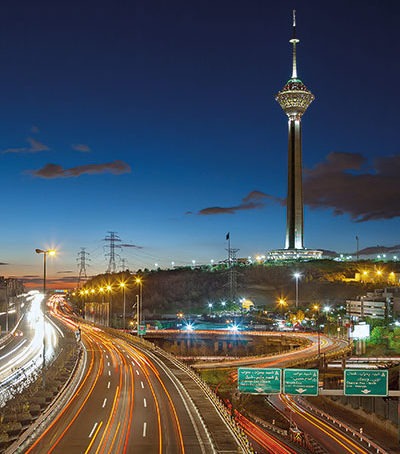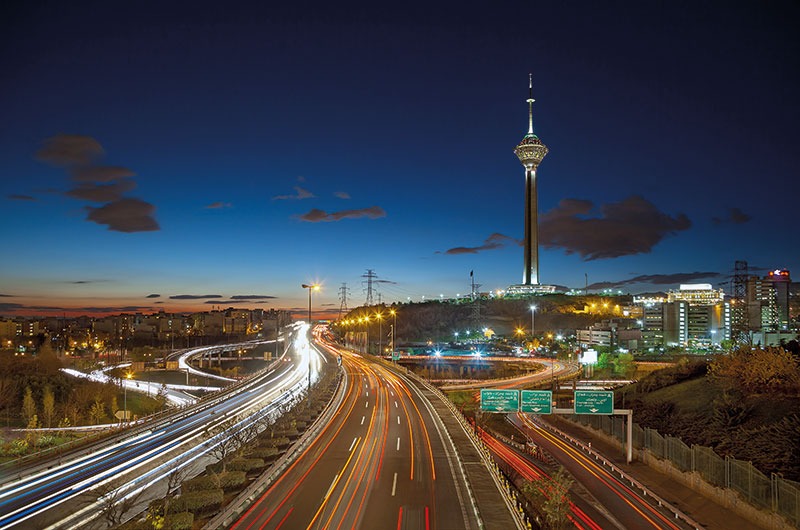In 2016, the easing of sanctions brightened Tehran’s market-growth prospects, allowing it to build on the city’s other strengths, which include its status as Iran’s capital, a large population and a strong commercial sector. The tourism sector seems to be at the forefront of growth plans, with the Iranian government having unveiled an incentive plan granting years of tax exemption to both domestic and foreign investors in the hospitality industry. Likewise, the government’s national outlook plan aims to increase the number of tourist arrivals from 4.8 million in 2014 to 20 million in 2025.
International hotels
Due to a high inflow of business travelers visiting Iran over the past years, there has been an increase in demand for branded hotels, operated by international hotel chains. The French multinational AccorHotels Group was the first international chain to begin operating in Iran after the lifting of sanctions, opening a Novotel at Imam Khomeini Airport and an Ibis brand, with plans to develop across the different segments in Iran’s major cities, including Tehran. Similarly, Rotana Hotels & Resorts has signed management agreements for four hotels in Iran, with plans to open two in Tehran this year.
Development of Iranian-owned hotels
About 13 percent of hotels in Tehran categorize themselves as 4- and 5-star, despite not necessarily meeting internationally recognized standards for such classifications. Iranian-owned hotels have been opening in rapid succession in the past two years, upgrading their services and enhancing their managerial operations. The 84-room Aramis Boutique Hotel and the 550-room lavish Espinas Palace Hotel are two such examples.
New segments
For years, Tehran has been primarily sought out by business travelers. However, following the lifting of sanctions, the government is expanding Tehran’s tourism appeal by sharpening its focus on the development of other sectors, namely:
• Leisure tourism – Supported by the city’s cultural attractions and rich heritage
• Religious tourism – Building on Tehran’s position as the central point for religious tourists visiting pilgrimage sites in Iran
• Health tourism – Capitalizing on the high quality of healthcare to attract growing numbers of medical tourists from the region
The construction industry has therefore been working on renovating old buildings and transforming them into boutique hotels to accommodate all types of visitors, with a focus on modern, mid-range properties that will cater to young Iranians traveling domestically, as well as international tourists.
F&B industry: new vision and extensions
Iranian and international restaurant chains are entering Tehran and also expanding there. Western food franchises have started returning to the capital’s food market, with the French entrepreneur Amaury de la Serre, who has opened a high-end sushi chain, titled Sushi Shop, one name now operating in the city. Spain’s Telepizza, the largest non-US-based pizza delivery company in the world, opened its first outlet in July 2017 through an Iranian group, and is preparing to invest 100 million euros to expand nationwide.
To invest or not to invest?
Given Tehran’s large population of 8.7 million people, relatively high level of GDP per capita and large consumer market, it’s easy to see why the city would be a draw for foreign investors, alongside the country’s other populous hubs, such as Mashhad, which is home to 3 million people, Isfahan (1.9 million), and Karaj, Tabriz and Shiraz (1.5 million each). However, a degree of uncertainty continues to hang over Iran, and investors should act cautiously.
Risk is priced in
While international investors are considering Tehran for business and investment, many are still wary about investing straightaway. Besides the obvious geo-political risks, there are other limitations to consider, including:
• Limited advancement. Iran’s long-term detachment from the international banking system means the knowledge and expertise in modern financial services is restricted.
• Separate standards. The banking sector is behind those of Iran’s peers and most firms do not yet adhere to international accounting standards.
• Complex interactions. Iran lacks an efficient foreign exchange market which increases the complexity of moving money in and out of the country easily.
• High rent scheme. The combination of a down payment and a monthly rent scheme in Tehran produces rents per-square-meter that are often higher than those found in mature cities like Paris, London and New York
China: number one foreign investor
For many years, China has been a close ally of Iran, largely ignoring the West’s sanctions that were paralyzing the country, while European competitors struggled to convince banks to fund their Iranian projects.
• Leading business partner. As a result, China is now Iran’s primary trade partner, contributing to over 40 percent of the country’s exports and imports.
• Infrastructure investments. China’s One Belt One Road initiative promises more than USD 1 trillion in infrastructure investments, including bridges, rails, ports and energy projects across Europe, Asia and Africa in over 60 countries, including Iran, facilitating the tourism flow in and out of Tehran.
• Oil exchange. With Iran cut off from global markets due to sanctions, China has been flooding Iran with consumer goods and services in exchange for oil, importing more than 441,000 barrels each day.















